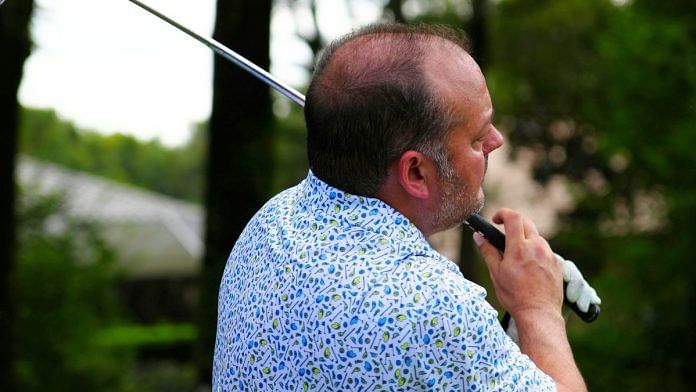I recently treated a 32-year-old who had started to go bald. It was really affecting his confidence and despite him being a doctor, he desperately asked about the efficacy of unregulated sprays and oils that make tall promises.
It got me thinking, unlike patients who normally wait until it’s too hard to ignore, my patients are in through the door as soon as they find the hair thinning. Men, especially, have a societal and personal stake in their hair remaining intact and are ready to go to any lengths to keep it. But a hair transplant can’t fix thinning hair.
So, why do men go bald and at what stage should one consider what treatment?
Alopecia, or hair loss, can occur due to various reasons, with male pattern baldness being one of the most common.
Male pattern baldness, also known as androgenetic alopecia, is a genetic condition characterised by a receding hairline and thinning of hair on the crown of the head. It’s believed to be primarily caused by a combination of genetic predisposition and hormonal factors, particularly the hormone dihydrotestosterone (DHT).
A study of 12,806 men of European ancestry found that people with the gene had more than twice the risk of developing male pattern baldness than people without it.
Also read: Dear bearded men, your grooming should begin with skincare, not just scissors
When to get a transplant
The Norwood-Hamilton scale is a graduation system for male alopecia that measures the different stages and evolution of hair loss.
Stage 1: There is no significant hair loss or recession.
Stage 2: There is a 1 to 2 cm recession. It’s called an ‘adult’ or ‘mature’ hairline. Sometimes, there is a slight hair loss seen at the vertex, the top of the skull. At this stage, it’s better to take care of your hair with treatments based on natural products, such as argan oil or rosemary essential oil rather than medication with strong side effects. It is not advisable to get a hair transplant at this stage, as hair may continue to fall out. Once it does, it will be difficult to connect the initially transplanted area to the remaining hair.
Stage 3: This is when significant balding appears in the centre of the skull and/or when the frontal line retreats toward the top of the skull. Treatments to consider at this stage include Platelet-rich plasma treatment to encourage hair growth, laser treatment to slow down the baldness and hair transplants.
Stage 4: By the time you are at this stage, no remedy works and hair loss beyond the hairline becomes significant. There is no hair left on the upper part of the head, except for a band connecting the two sides. It’s the ideal time to consider a transplant.
Stage 5: Typically called very advanced baldness, but not all hair has fallen off. A very thin bridge of hair remains on the top of the head, connecting each side.
Stage 6: The receding hairline connects with the balding area at the top of the skull. The band of hair across the top of the head is gone or sparse.
Stage 7: The most severe stage of hair loss.
Also read: Young Indian men are battling a chronic hair fall problem. Here’s how they can reverse it
Causes of alopecia
Male pattern baldness is not the only cause of alopecia. Other reasons include:
Alopecia areata: This is an autoimmune condition where the immune system mistakenly attacks hair follicles, leading to hair loss in small, round patches on the scalp.
Telogen effluvium: This type of hair loss occurs when there’s a significant stressor on the body, such as illness, surgery, or extreme stress. It causes a large number of hair follicles to enter the resting (telogen) phase of the hair growth cycle prematurely.
Traction alopecia: This results from repeated pulling or tension on the hair, often due to tight hairstyles like ponytails, braids, or cornrows.
Medical conditions: Certain medical conditions such as thyroid disorders, scalp infections, and nutritional deficiencies can also cause hair loss in men.
Treatment options for alopecia in men vary depending on the cause and severity of the condition. For male pattern baldness, treatments like minoxidil and finasteride are commonly used to slow down hair loss and promote hair regrowth. In more severe cases or when these treatments are ineffective, hair transplants may be considered.
For other types of alopecia, treatment may involve addressing the underlying cause, such as managing autoimmune conditions with medication or reducing stressors that contribute to telogen effluvium. Consulting with a dermatologist or a healthcare professional specialising in hair loss can help determine the most suitable treatment approach.
Dr Deepali Bhardwaj is a Consultant Dermatologist, Max Hospital, Saket. She is also an anti-allergy specialist, laser surgeon and internationally trained aesthetician. She tweets @dermatdoc. Views are personal.
(Edited by Theres Sudeep)




Awesome information Dr. U r a 💎 gem